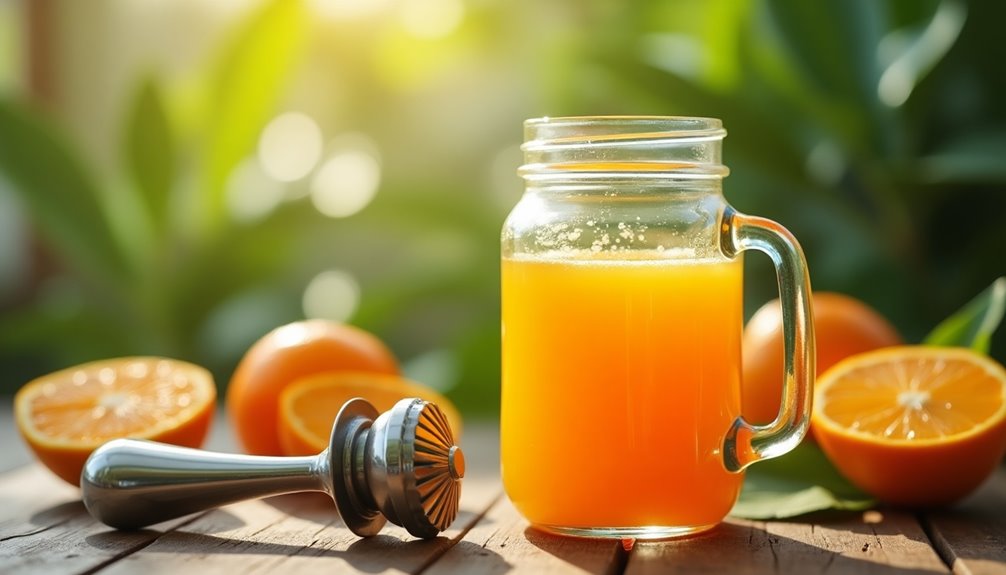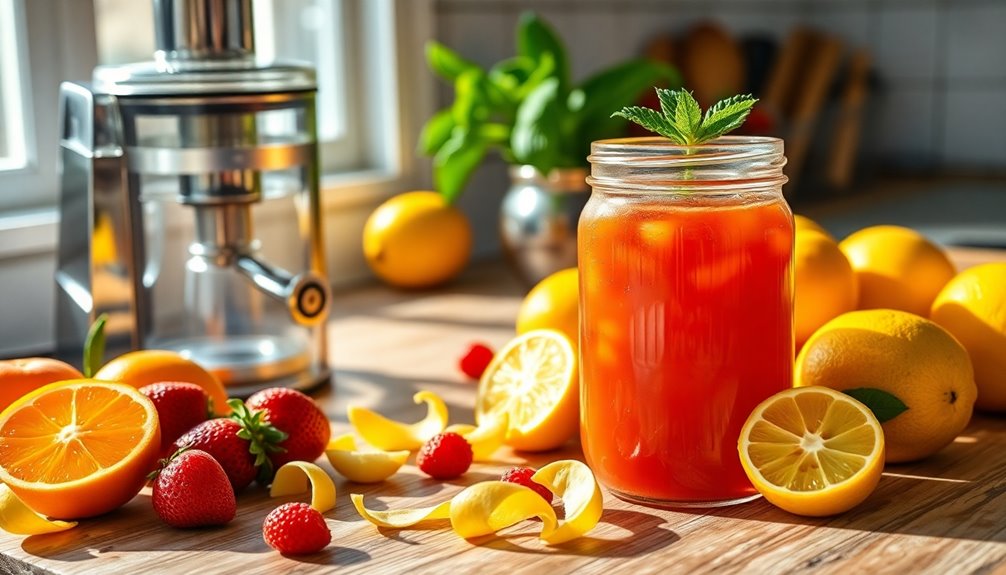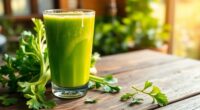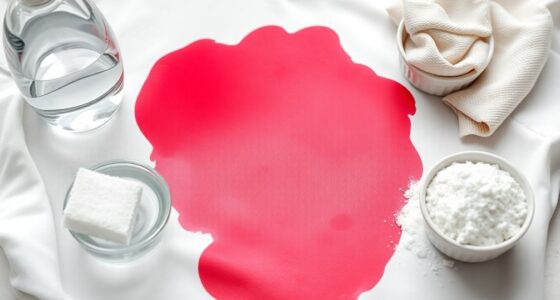To make juice concentrate, start by juicing easily juiced fruits like oranges, or boil harder-to-juice fruits such as blueberries for flavor extraction. For smooth concentrated juice, strain out pulp and solids. Store your concentrate in airtight containers in the fridge or freeze for longer storage. Remember to keep fruits fresh and ripe for the best taste. This simple process lets you enjoy fruit flavors year-round—and there's much more you can learn about enhancing your juice experience.
Key Takeaways
- Select ripe, flavorful fruits, focusing on easily juiced options like oranges and harder-to-juice fruits like blueberries for optimal flavor.
- Squeeze juice from fruits like oranges, or boil blueberries to extract flavors, ensuring to monitor boiling time for juice quantity.
- For easier fruits, freeze the juice in an airtight container, then thaw and strain to remove pulp for a smooth concentrate.
- Store juice concentrate in airtight containers in the fridge, using it within a week for the best freshness.
- Enhance flavor by repeating the freezing and melting process, which also brightens the color of the concentrate.

If you love the bold flavors of fresh fruit juice but want to enjoy it long after the harvest, making juice concentrate is a great solution. Juice concentrate allows you to capture the essence of your favorite fruits, intensifying their flavor while making them easy to store. This way, you can have the taste of summer available any time of the year.
The process starts with selecting your fruits, and the method varies depending on whether you're working with easily juiced fruits, like oranges, or harder-to-juice options, like blueberries and strawberries.
For fruits like oranges, you can simply squeeze the juice and freeze it in an airtight container. Once it's frozen, take the container out and let it thaw. As the juice melts, the liquid will separate from the ice. You can then pour the liquid through a juice in a strainer to catch any pulp or solids, leaving you with a smooth, concentrated juice. This method preserves the vibrant flavor while minimizing water content, resulting in a juice that's bursting with taste.
On the other hand, when dealing with harder fruits like blueberries, the approach is a bit different. You'll need to boil the blueberries first to extract their flavors. Boiling softens the fruit, releasing its juices into the water. After boiling for a while, strain the mixture through a juice in a strainer to remove the skins and seeds. The longer you boil, the deeper the flavor becomes, but keep an eye on the water content; too much boiling can lead to too little juice. You can typically expect about one cup of concentrate from blueberries and around two cups from strawberries, making them great options for this process.
Once you've got your juice concentrate, you can store it in airtight containers in the fridge for up to one week. This makes it incredibly versatile. You can use it in smoothies, cocktails, or even as a sweetener in various recipes.
If you want to enhance the flavor even further, consider repeating the freezing and melting process multiple times. This not only intensifies the taste but also brightens the color, giving your concentrate an appetizing appearance.
If you’ve got an abundance of fruits or simply want to enjoy your favorite flavors year-round, making juice concentrate is the way to go. By removing the water and focusing on the essence of the fruit, you create a delicious product that can elevate your culinary creations. Not only does juice concentrate intensify the flavors, but it also preserves the nutritional benefits of the fruits. For those interested in incorporating more greens into their diet, learning how to make green juice can complement your fruit concentrates perfectly. Whether blended into smoothies or used as a flavorful base for sauces and marinades, the versatility of juice concentrates opens up a world of possibilities in the kitchen.
Frequently Asked Questions
How Do You Make Juice Concentrate?
To make juice concentrate, you start by choosing your fruit.
If it's easy to juice, freeze the juice for about 24 hours, then thaw it in a strainer to separate the liquid from ice.
For tougher fruits, wash, peel, and slice them, then boil to extract flavors.
Strain the mixture to isolate the juice.
After that, you can store the concentrate in an airtight container in the fridge for up to a week.
How to Reduce Juice to a Concentrate?
You might think reducing juice to a concentrate is complicated, but it's actually quite simple!
Start by juicing your chosen fruit, whether using a juicer or hand-squeezing. For tougher fruits, boil them to release their flavors, then strain out the pulp.
Freeze the juice for a day, then thaw it to separate the ice. Repeat this process a couple more times, and you'll have a flavorful concentrate ready to use in your favorite recipes!
What Are the Ingredients in Juice Concentrate?
Juice concentrate primarily consists of freshly squeezed fruit juice, which undergoes a process to remove water and intensify flavor.
You'll find that the soluble solids typically range from 65% to 70%, making it sweet and thick. Common fruits used include oranges, lemons, berries, and pomegranates.
Sometimes, manufacturers add sugar or preservatives to enhance sweetness and shelf life. So, when you buy juice concentrate, these ingredients are usually part of the mix.
How to Concentrate Liquid at Home?
Imagine a medieval alchemist, carefully distilling potions.
You can concentrate liquid at home by freezing it solid for at least 24 hours. Afterward, melt the block while straining it over a bowl to collect the flavorful liquid, discarding the ice.
Repeat this process a couple more times to deepen the flavor.
Finally, store your concentrated liquid in an airtight container in the fridge for up to a week, ready for your culinary creations.
Conclusion
Now that you know how to make juice concentrate, why not give it a try? With just a few simple steps, you can transform fresh fruits into a flavorful base for your drinks. Imagine savoring the taste of summer all year round! So, roll up your sleeves and unleash your creativity in the kitchen. After all, who wouldn't want to impress friends and family with homemade juice concentrate that brings a burst of flavor to any occasion?
Cindy thoroughly researches juicing trends, techniques, and recipes to provide readers with practical advice and inspiration. Her writing style is accessible, engaging, and designed to make complex concepts easy to understand. Cindy’s dedication to promoting the advantages of juicing shines through her work, empowering readers to make positive changes in their lives through the simple act of juicing.

















